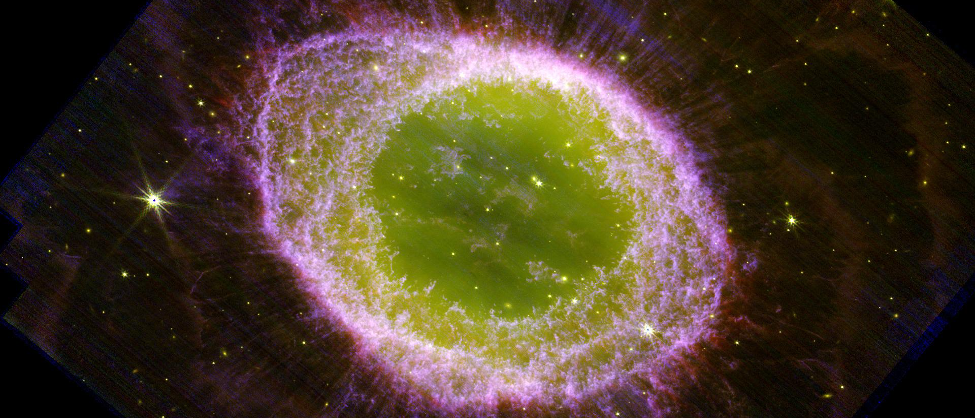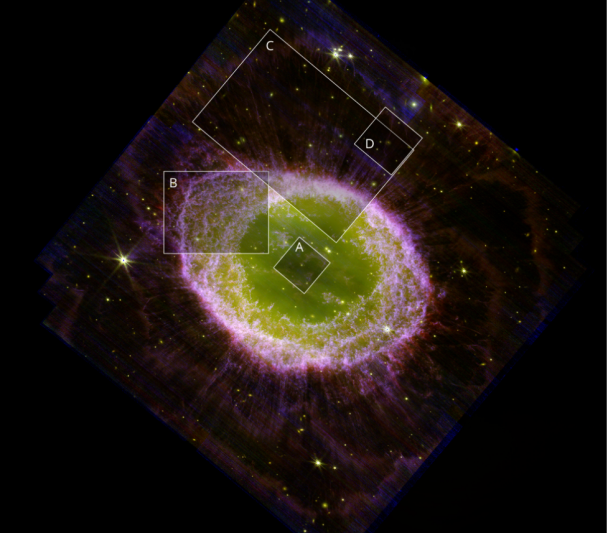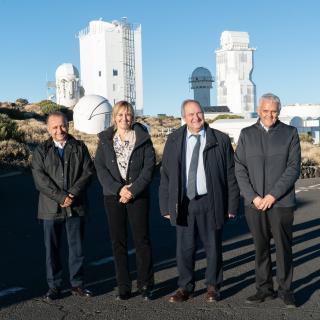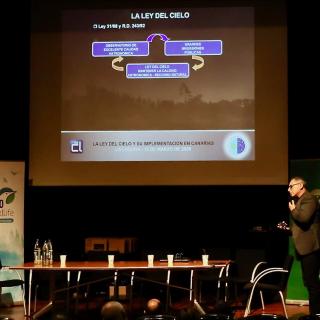JWST/NIRcam composite image of the Ring Nebula. The image clearly shows the main ring, surrounded by a faint halo and with many delicate structures. The interior of the ring is filled with hot gas. The star which ejected all this material is visible at the very centre. It is extremely hot, with a temperature in excess of 100,000 degrees. The nebula was ejected only about 4000 years ago. Technical details: The image was obtained with JWST's NIRCam instrument on August 4, 2022. Images in three different filters were combined to create this composite image: F212N (blue); F300M (green); and F335M (red).
An international team of astronomers, in which researchers from the Instituto de Astrofísica de Canarias are taking part, share the intricate and delicate beauty of the classical nebula Messier 87, showing unprecedented detail, which gives a fascinating view of this celestial wonder.
For many amateur astronomers the Ring Nebula is a well-known object, in the constellation of Lyra, and visible throughout the summer. This is a planetary nebula, produced by a dying star which has thrown off the major part of its mass towards the end of its life. The images obtained by the James Webb Space Telescope (JWST) offer an unprecedented opportunity to study and to understand the complex processes which produced and shaped this cosmic work of art.
Mike Barlow, the researcher who leads the JWST project to study the Ring Nebula, has shared his enthusiasm for the findings: “The James Webb Space Telescope has given us an extraordinary view of the Ring Nebula, a view never observed before. The high-resolution images don’t show only the intricate details of the expanding shell of the nebula, but also reveal the inner region around the central white dwarf with exquisite sharpness. We are witnessing the last chapters in the life of a star, a preview of the far future of our Sun, and the observations of the JWST have opened a new window, helping us to understand these amazing cosmic events. We will be able to use the Ring Nebulas a laboratory to study how planetary nebulae form and develop.
The Ring Nebula is evidence of a stage in the life cycle of a star. Situated at some 2,600 light years from Earth, the nebula was produced by a dying star which threw off its outer layers into space. What makes these nebulae so impressive is the variety of shapes and patterns, which often include delicate bright rings, expanding shells and intricate diffuse clouds. These patterns are the result of the complex interaction of different physical processes which are still not well understood. The radiation from the hot central star illuminates these structures. In a similar way to what we see in Fireworks, the different chemical elements in the nebula emit light of specific colours, producing the colored patterns and giving clues to the astronomers who are studying the chemical evolution of these objects,
“The unprecedented spatial resolution obtained with the JWST has allowed us to see structures in the form of clumps and filaments as small as 150 astronomical units (AU), where at astronomical unit is the distance between the Earth and the Sun”, explains Arturo Manchado, an IAC researcher and a member of the Ring Nebula Project of the JWST.
The international team which has presented these images today comprises researchers from the United Kingdom, France, Canada, the USA, Sweden, Spain, Brazil, Ireland, and Belgium; they will carry on working and will also publish images of this nebula taken with the MIRI instrument on the JWST.
The James Webb Space Telescope is the result of a collaboration between NASA, ESA, and the Canadian Space Agency, CSA. It has altered the ground rules of astronomy. Its capabilities are greater than those of previous space telescopes, allowing scientists to go deeper into the universe, and explore its frontiers.




